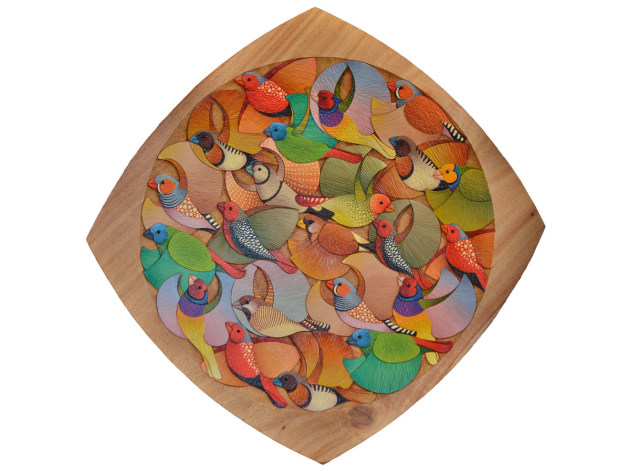Paint on wood? How thoughts and fashions have changed
Words and photos: Michael Gill
I have waited all my life to work up the courage to paint one of my woodcarvings. I was so lucky to be at art school when the 60s turned into the 70s and received fine, classical training from skilled teachers in drawing, painting, colour and design.
At the very same time, the global craft revival was celebrating the intrinsic beauty of natural materials such as wood, clay, leather and fibre. It amounted to worship, really. ‘Raw good, processed bad’.
Elsewhere, the heroes of the op art, pop art and advertising art movements were spraying and screen printing vivid colours over everything they could hold down. Psychedelia had raised its groggy, hallucinating head.
We were expected to choose our poison – Art or Craft.
The world had been swamped, after all, with brilliantly coloured plastics and synthetics, dyed chemically in myriad, impossibly vibrant hues. Over the decades, we began to take them for granted, to be embarrassed or annoyed by them, even to equate
them with childishness. Sophisticates embraced the blacks, whites and greys.

If you lived in Ancient Times, pure colours were experienced via flowers, rainbows, gemstones and shells. Lapis lazuli was ground into a fabulous blue pigment, purple was extracted from nautilus shells. (Apparently, alizarin crimson was not made from lizards, and ultramarine blue was not squeezed from blue whales. Well, one or two beetles may have been martyred to make cochineal red).
Colour was special, expensive and revered, never taken for granted. For millennia, statues, sculptures, carvings, murals and furniture were painted until they quivered with life. Glass, ceramic glazes and mosaics glowed with pigments born in the furnaces from gold, copper, silver, cobalt, cadmium and chromium. A precious alchemy and a hard-won gift for the human spirit.
Michael Gill is a designer maker whose work is held in numerous public and private collections. His Sydney Harbour Cocktail Cabinet was featured in AWR#119 and you can read about him here.
Image above: ‘Here is my tiny, humble offering – the Finches Platter, carved from Sydney silky oak and painted in traditional oils, 600mm diameter.’



